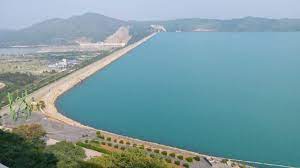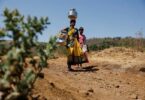Nusrat Bibi
Pakistan due to its geographical location is the most affected area of the glob to the climate change extremes in the world on German watch’s Long-Term Climate Risk Index (1998-2017) which has witnessed 152 extreme weather change events from 1999 to 2018.Still its laws and policies are in infancy and donor dependent.
Despite of the large infrastructure and immense staff allocated on federal and on provincial level in Climate Change Ministry, Environmental Protection Agency and Disaster Risk Management Centers but their work starts in reaction to the damage always.
The behavior of our people in these offices is to cry over the spilt milk only and usually complaining for deficiency of funds. Pakistan is not a poor country in resources but is poorest of the poor in finding committed people to rightly mange these resources. Above all the worst luck of my country is that we the people are the most sufferers in any calamity either it is natural or man-made. Why our government is least interested in providing us protection?
Since 1974 Swabians have sacrificed a massive area of land to the construction of Turbela Dam and consequently 100,000 people were displaced who are still not settled. Also, in summer season the days are hotter due to extreme humidity from this impound area of dam. Aside from such externalities, now we are suffering from heavy rain and flash flooding since two years due to which our millions worth standing crops of Wheat and Maize haven been badly affected with unlimited losses of infrastructure and other biota. Despite of the huge economic gains to the government in hydropower, the common man of Swabi is still poor and daily wager.
Moreover, due to this massive Dam, the soil of swabi is facing continuous salt deposits and fertility problems. Furthermore, the biggest cause of the flash flooding in Swabi is an intense precipitation and heavy rain due to humidity in the surrounding environment of this larger dam.
While now the climate change event has augmented the frequency and intensity of this precipitation to threshold level in summer in district Swabi and if not strategically planned and controlled this issue of flooding, there will be higher risk of Tsunami in the dam and district Swabi will suffer from collateral damages.
Therefore, flood management is the utmost remedy on the part of the government.
In order to manage such catastrophic events, it is imperative to take preventive and precautionary measures along with preliminary Environmental Impact Assessment of Flood to analyze, asses, predict and formulate strategic solution of controlling the causes of precipitation and heavy rain and combat the causes and effect of climate change. More sustainable and sound regulations are needed urgently in this regard.
Attention must also be drawn to more scientific data and accurate research in ecology and environmental protection. In addition to, state of the art metrological system should be installed to predict the weather pattern and early alert warning to the communities along with other resilience policies. Similarly, nature friendly policies of land use planning and management should be directed along with sound outreach program to all the communities in the area for their awareness and up gradation in environmental management and climate change programs.
Furthermore, ensure more plantations in the whole area and more wetlands development.
Above all, Zone wise division of land and scientific policies in engineering works of development should be readily made possible to avoid further development in the natural passages of water courses. Similarly encourage rain harvesting technologies and energy efficient housing with more plantation and natural soil to speed up the infiltration of rain water in the soil and regulate water recharge to the aquifers.
Paved tops boost runoff and intense flooding so must be avoided in houses. The most important tool in addition to other sound solutions is to direct the agriculture department for research in early and flood resistant varieties of crops to withstand flooding. Encourage environmental policy and climate management degree programs and boost environmental policy makers and scientists.
The writer is Environmental Policy advocate.







